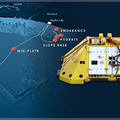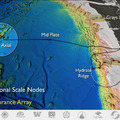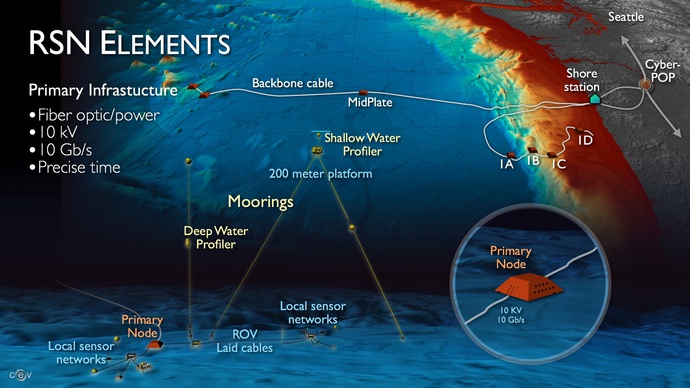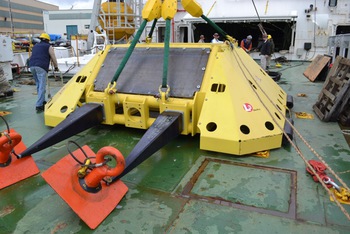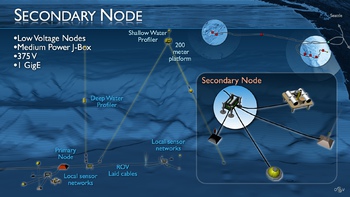Primary nodes are placed in environmentally benign areas and extension cables are used to reach the scientific work sites.
At a series of meetings, the U.S. science community chose optimal experimental sites on the seafloor and throughout the water column to address fundamental science questions key to understanding the oceans and how they change through time. High-priority sites that require the significant power and bandwidth provided by the Cabled Array were identified: an experimental site at Axial Seamount on the Juan de Fuca Ridge; another site at Southern Hydrate Ridge on the Cascadia Margin; and three shallow water sites west of Newport, Oregon (the Endurance Array). To access these sites, there are seven Primary Nodes, and an array of low-power nodes and junction boxes.
Primary Nodes: The Primary Nodes were installed in 2012. They are terminal points on the backbone cable. Their function is to distribute power and bandwidth (10 Gb/sec on each port) to areas where distributed networks of sensors are deployed and to high-power and high-bandwidth moorings that span the entire water column. Primary Nodes are placed in environmentally benign areas and extension cables extend to the scientific work sites. The Primary Nodes also function as "housekeepers" for system control, out-of-band communications, and engineering monitors. They house Medium Voltage Converters that convert the 10 kVdc primary level voltage to 375 Vdc levels. This lower power is sent to Low- and Medium-Power Nodes, part of what is called the secondary infrastructure, at the science work sites. Finally, Primary Nodes provide extra ports for future expansion that may span distances of >100 km.
Low- and Medium-Power Nodes and Junction Boxes: Direct power and communications to experimental sites (including >300°C black smokers, dense animal communities on the seafloor, methane seeps, and gas hydrate deposits) are provided by Low- and Medium-Power Junction Nodes and Junction Boxes. This infrastructure provides 375 Vdc to 12 V power to sensor arrays on the seafloor and water-column moorings, and 10 Gb/s to 1 Gb/s bandwdith. Eight instrument ports provide 12 to 48V and 10/100BASE-T, RS232 or RS485 data links. Nodes can be daisy-chained, thereby providing extensive expansion capabilities for future science and education efforts. Nearly all of the secondary infrastructure was installed in 2014, except for cabled Deep Profiler moorings that were installed in 2015.

